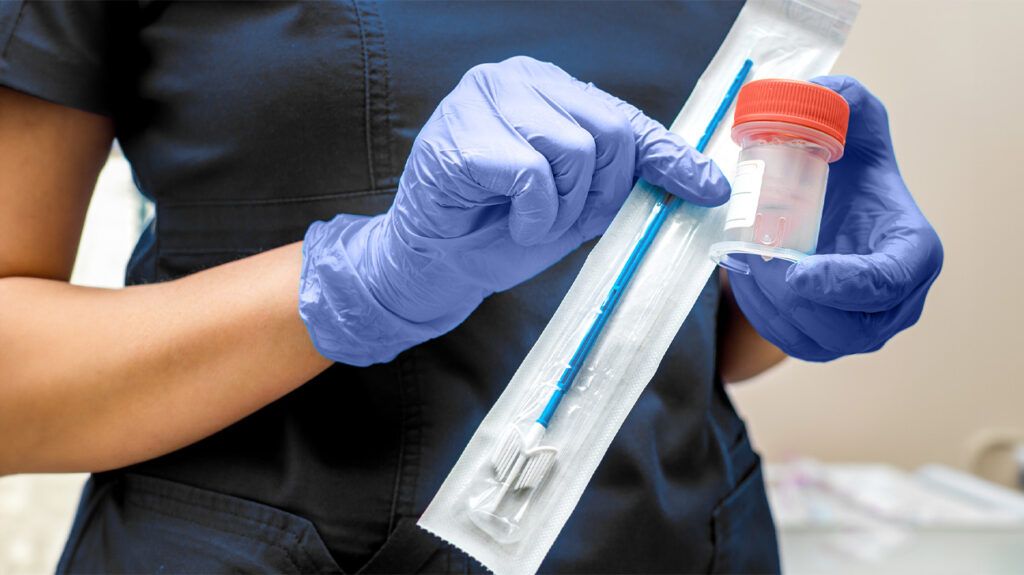Original Medicare and Medicare Advantage plans both cover regular PAP smears as part of preventive health services.
PAP smears fall under the category of preventive health services. They help healthcare professionals screen people for potential cervical cancer and other health issues.
Coverage may vary based on a person’s previous test results. However, Medicare covers a PAP smear once every 2 years for most people.
Glossary of Medicare terms
We may use a few terms in this article that can be helpful to understand when selecting the best insurance plan:
- Out-of-pocket costs: An out-of-pocket cost is the amount a person must pay for medical care when Medicare does not pay the total cost or offer coverage. These costs can include deductibles, coinsurance, copayments, and premiums.
- Deductible: This is an annual amount a person must spend out of pocket within a certain period before an insurer starts to fund their treatments.
- Coinsurance: This is the percentage of treatment costs that a person must self-fund. For Medicare Part B, this is 20%.
- Copayment: This is a fixed dollar amount a person with insurance pays when receiving certain treatments. For Medicare, this usually applies to prescription drugs.

People with Original Medicare (parts A and B) can get regular PAP smears. They fall under Part B, which covers costs for medically necessary services and devices.
People with a Medicare Advantage (Part C) plan will also receive coverage for routine PAP smears. Medicare Advantage plans must cover the same services as Original Medicare.
PAP smears
Original Medicare and Medicare Advantage plans both cover the cost of human papillomavirus (HPV) testing as part of a PAP smear.
Nearly every sexually active person develops HPV within
Most people will not know whether they have HPV. This makes PAP smears an important screening tool to help lower the risk of cervical and other cancers.
Medicare also covers related tests such as PAP smears with specimen collection and pelvic and breast exams.
Learn about Original Medicare vs. Medicare Advantage.
Original Medicare and Medicare Advantage plans follow the same schedule for covering routine PAP smears.
Most people can receive a PAP smear once every 24 months.
Those who belong to the following two groups may get screenings every 12 months:
- people at high risk of cervical cancer
- people of reproductive age who have received an abnormal PAP smear within the past 36 months
Every 5 years, people ages 30 to 65 years with no symptoms of HPV can get HPV screening during their PAP smear.
Original Medicare and Medicare Advantage plans fully cover the cost of PAP smears and PAP smears with HPV testing as long as the doctor or healthcare facility accepts the assignment.
“Assignment” means that the doctor or healthcare professional agrees to accept the amount that Medicare pays for services and they agree not to charge additional costs.
There is no minimum deductible to meet for these screenings.
A person is responsible for monthly premiums for Medicare Part B or their Medicare Advantage Plan.
In 2024, the monthly premium for Part B starts at $174.70. Most people qualify for the base premium, but a single person with an annual income exceeding $103,000 or a married couple with an annual income exceeding $206,000 will pay an additional amount.
A person should discuss their risk for cervical cancer with a healthcare professional to determine whether they may need more regular PAP smears.
Risk factors for cervical cancer that may indicate a need for more frequent screenings
- a family history of cervical cancer
- sexual considerations, for example, having multiple partners
- difficulty accessing healthcare services
- taking oral birth control for several years
- smoking
- living with a weakened immune system
- having an HPV infection
A person should discuss their risk factors with a healthcare professional to determine whether annual PAP smears may be necessary.
Read about cervical cancer screening.
Medicare resources
For more resources to help guide you through the complex world of medical insurance, visit our Medicare hub.
Original Medicare (Part B) and Medicare Advantage plans fully cover the costs of a PAP smear at any facility that accepts Medicare.
Most people can receive screenings every 24 months, though some people with qualifying conditions can receive screenings every 12 months.
Individuals are responsible for their monthly premiums. In 2024, the base premium for Part B is $174.70. People with higher incomes pay higher premiums. Premiums for Medicare Advantage vary based on location, plan, and insurance provider.
Risk factors for cervical cancer include HPV infection, sexual history, and a family history of cervical cancer.
